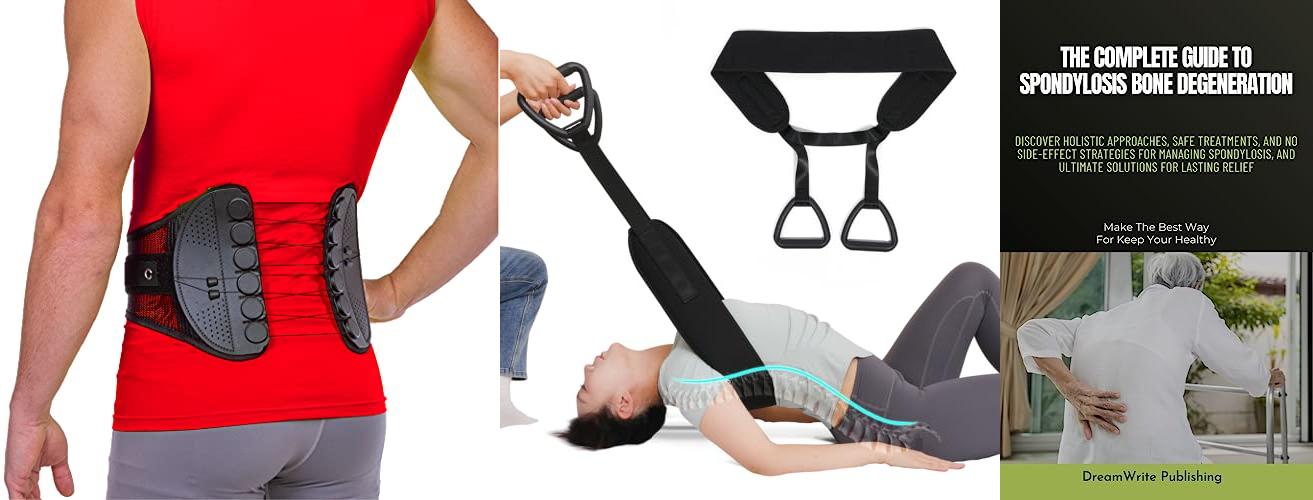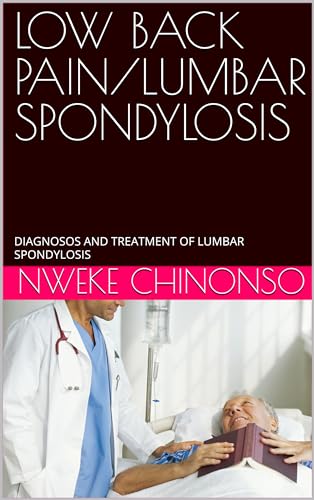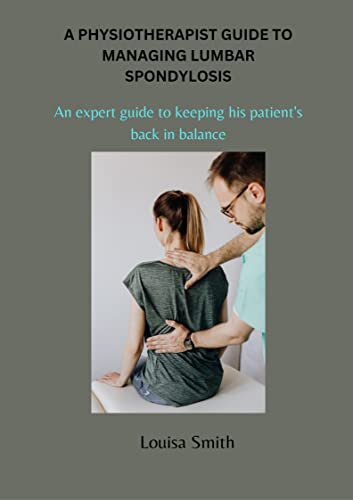Does your lower back ache when you stand for too long or bend down? If so, you might be dealing with lumbar spondylosis. This common condition affects the spine in your lower back, and it can make everyday movements feel painful. It’s tough to figure out which exercises will actually help and which might make things worse. You want relief, but you don’t want to cause more trouble.
Choosing the right exercises for lumbar spondylosis can feel like navigating a maze. There are so many different suggestions out there, and it’s hard to know what’s safe and effective for your specific needs. You might worry about doing the wrong thing and feeling even more pain. But what if there was a clear path to finding exercises that can ease your discomfort and help you move more freely?
In this post, we’ll cut through the confusion. We’ll explore simple, effective exercises that can help strengthen your back and reduce pain. You’ll learn how to move better and feel more confident doing the things you love. Let’s dive in and discover how exercise can be your ally in managing lumbar spondylosis.
Our Top 5 Exercise For Lumbar Spondylosis Recommendations at a Glance
Top 5 Exercise For Lumbar Spondylosis Detailed Reviews
1. BraceAbility Spine Sport Back Brace – Athletic Men’s and Women’s Workout Lumbar Corset for Exercising
Rating: 9.2/10
The BraceAbility Spine Sport Back Brace is designed for people who want to stay active even with back pain. It helps with many conditions like sciatica and herniated discs. This brace is made for both men and women. It works for all sorts of activities, from sports to jobs that require a lot of movement.
What We Like:
- The adjustable dual-pulley system gives you good support. It takes pressure off your spine.
- It’s made of breathable nylon mesh. This keeps you cool and allows you to move freely.
- This brace helps relieve pain so you can keep doing what you love.
- It’s great for many different back problems and for active jobs like nursing and police work.
- The small size fits waist sizes from 30 to 35 inches.
What Could Be Improved:
- It’s important to measure your waist carefully to get the right size.
- While it’s good for many activities, it might not be suitable for extremely heavy lifting.
This back brace offers effective support and pain relief for active individuals. It’s a solid choice for anyone needing to manage back discomfort while staying on the move.
2. Fanwer Spinal Decompression Devices Lumbar Traction Low Back Stretcher Spine Decompression Belt for Lumbar Spine Pain Relief
Rating: 9.0/10
Tired of nagging back pain? The Fanwer Spinal Decompression Device offers a simple, effective way to find relief right at home. This lumbar traction belt is designed to safely decompress your spine, easing pressure and helping your back bones and muscles feel better. It’s a great tool for anyone dealing with herniated discs, spondylosis, or just general lower back discomfort.
What We Like:
- Effectively relieves back pain by decompressing the spine.
- Easy to use; just lie down and have a partner gently pull the handles.
- No need to hang upside down or use extra equipment.
- Made from high-density canvas and thickened webbing for durability.
- Helps improve back pain, relieve neuralgia, and increase flexibility with daily use.
What Could Be Improved:
- Requires a partner to operate the device.
- Initial use should be for a short duration (3-5 minutes).
- Care must be taken not to use too much force.
This back stretcher belt is a fantastic option for managing back pain without leaving your home. It’s built to last and offers noticeable benefits with consistent use.
3. THE COMPLETE GUIDE TO SPONDYLOSIS BONE DEGENERATION: DISCOVER HOLISTIC APPROACHES
Rating: 8.9/10
If you’re dealing with spondylosis, this book offers a fresh perspective. It’s called THE COMPLETE GUIDE TO SPONDYLOSIS BONE DEGENERATION: DISCOVER HOLISTIC APPROACHES, SAFE TREATMENTS, AND NO SIDE-EFFECT STRATEGIES FOR MANAGING SPONDYLOSIS, … RELIEF (Health and wellness series Book 1). This guide focuses on natural ways to manage bone degeneration. It explores different treatments that don’t come with unwanted side effects. The book aims to help you find relief and improve your well-being.
What We Like:
- It presents a holistic view of spondylosis management.
- The book emphasizes safe treatments with no side effects.
- It offers practical strategies for relief.
- This is the first book in a health and wellness series, suggesting more helpful content to come.
What Could Be Improved:
- The title is quite long and could be more concise.
- The specific types of holistic approaches and treatments are not detailed in the provided features.
- More information about the author’s expertise would be helpful.
This book appears to be a valuable resource for anyone seeking natural ways to manage spondylosis. It promises a path to relief without the worry of negative side effects.
4. LOW BACK PAIN/LUMBAR SPONDYLOSIS: DIAGNOSOS AND TREATMENT OF LUMBAR SPONDYLOSIS (PHYSIOTHERAPY MANAGEMENT OF ALL MEDICAL CASES ( DIAGNOSIS AND TEEARMENT))
Rating: 8.5/10
This LOW BACK PAIN/LUMBAR SPONDYLOSIS: DIAGNOSOS AND TREATMENT OF LUMBAR SPONDYLOSIS (PHYSIOTHERAPY MANAGEMENT OF ALL MEDICAL CASES ( DIAGNOSIS AND TEEARMENT)) is a comprehensive guide for anyone struggling with lower back pain caused by lumbar spondylosis.
What We Like:
- Explains lumbar spondylosis clearly.
- Details different ways to diagnose the condition.
- Offers many physiotherapy treatments.
- Covers a wide range of medical cases.
- Helps understand how to manage pain.
What Could Be Improved:
- Could include more visual aids like diagrams.
- May be too technical for some readers.
- Lacks information on specific exercise equipment.
- Doesn’t mention alternative pain relief methods.
- The title is very long and could be shortened.
This resource provides valuable information for understanding and managing lumbar spondylosis. It empowers individuals to take control of their back health through physiotherapy.
5. A PHYSIOTHERAPIST GUIDE TO MANAGING LUMBAR SPONDYLOSIS: An expert guide to keeping his patient’s back in balance
Rating: 9.2/10
A PHYSIOTHERAPIST GUIDE TO MANAGING LUMBAR SPONDYLOSIS: An expert guide to keeping his patient’s back in balance offers a deep dive into managing a common back condition. It’s written by a professional who understands how to help people with this issue.
What We Like:
- Provides clear, expert advice for managing lumbar spondylosis.
- Focuses on practical strategies for patients to use.
- Helps users understand their condition better.
- Written by someone with hands-on experience.
- Aims to improve the patient’s quality of life.
What Could Be Improved:
- No specific features are listed, making it hard to judge the product’s format.
- The guide’s length and detail level are unknown.
- It’s unclear if it includes visual aids or exercises.
This guide appears to be a valuable resource for anyone dealing with lumbar spondylosis. It promises practical help from an expert perspective.
Choosing the Right Exercises for Lumbar Spondylosis
Lumbar spondylosis, a common condition affecting the lower back, can cause pain and stiffness. Exercise is a powerful tool to manage symptoms and improve your quality of life. But with so many options, how do you pick the right ones? This guide helps you find the best exercises for your needs.
Key Features to Look For in Lumbar Spondylosis Exercises
When selecting exercises, focus on those that offer specific benefits for your condition.
1. Gentle Movement and Flexibility
- Exercises should promote smooth, controlled movements in your lower back.
- They help increase flexibility and reduce stiffness.
- Look for stretches that gently lengthen your back muscles.
2. Core Strengthening
- A strong core supports your spine.
- Exercises that engage your abdominal and back muscles are crucial.
- These build stability and reduce strain on your lower back.
3. Low Impact Activities
- Avoid high-impact exercises that jolt your spine.
- Low-impact options like walking or swimming put less stress on your joints.
- They allow you to build strength and endurance safely.
4. Pain Management Focus
- The goal is to reduce pain, not increase it.
- Exercises should be performed within a pain-free range.
- Listen to your body and stop if you feel sharp pain.
Important Materials (What You Might Need)
While many exercises require no equipment, some can enhance your experience and effectiveness.
- Yoga Mat: Provides cushioning for floor exercises.
- Resistance Bands: Add gentle resistance for strengthening.
- Comfortable Clothing: Allows for free movement.
- Supportive Shoes: Important for walking or other weight-bearing activities.
Factors That Improve or Reduce Quality
The way you approach your exercises significantly impacts their effectiveness.
Factors That Improve Quality:
- Consistency: Regular practice yields the best results.
- Proper Form: Correct technique prevents injury and maximizes benefits.
- Gradual Progression: Slowly increase intensity or duration as you get stronger.
- Professional Guidance: A doctor or physical therapist can tailor a plan.
Factors That Reduce Quality:
- Overexertion: Pushing too hard can worsen pain and cause injury.
- Incorrect Form: Leads to ineffective workouts and potential harm.
- Ignoring Pain: Pain is a signal to stop or modify an exercise.
- Inconsistency: Sporadic exercise offers limited long-term benefits.
User Experience and Use Cases
The best exercises fit seamlessly into your daily life.
User Experience:
Users often report feeling more mobile and experiencing less pain after consistent exercise. They find that simple movements done regularly make a big difference. Many appreciate that they can do these exercises at home with minimal equipment. The feeling of regaining control over their back health is a common positive outcome.
Use Cases:
- Daily Routine: Incorporate stretches in the morning or before bed.
- Work Breaks: Perform simple movements to relieve stiffness during long sitting periods.
- Rehabilitation: Follow a physical therapist’s prescribed exercises after a flare-up.
- Preventative Care: Maintain a strong and flexible back to prevent future issues.
Frequently Asked Questions (FAQ) About Lumbar Spondylosis Exercises
Q: What are the most effective exercises for lumbar spondylosis?
A: Gentle stretching, core strengthening exercises like planks and bird-dog, and low-impact aerobic activities such as walking are very effective.
Q: How often should I do exercises for lumbar spondylosis?
A: Aim for at least 3-5 days a week. Some gentle exercises can be done daily.
Q: Can exercise make my lumbar spondylosis worse?
A: Yes, if you do the wrong exercises or perform them with poor form. It’s important to choose exercises that are appropriate for your condition and listen to your body.
Q: Should I see a doctor before starting exercises?
A: Yes, it’s always best to consult with your doctor or a physical therapist. They can help you create a safe and effective exercise plan tailored to your specific needs.
Q: What are some stretches that help with lumbar spondylosis?
A: Knee-to-chest stretch, pelvic tilts, and cat-cow pose are good options. Remember to move gently.
Q: How do I know if I’m doing an exercise correctly?
A: Focus on smooth, controlled movements. If you feel sharp pain, stop. Watching videos or working with a professional can help ensure proper form.
Q: Can I do exercises if I’m experiencing a lot of pain?
A: When pain is severe, focus on very gentle movements or rest. Consult your doctor. Mild to moderate pain may be managed with specific, modified exercises.
Q: What is “core strengthening” and why is it important?
A: Core strengthening means building the muscles in your abdomen and back. These muscles act like a natural brace for your spine, providing support and reducing pain.
Q: Are there any exercises I should avoid?
A: Generally, avoid high-impact activities like running, jumping, or heavy lifting. Exercises that involve twisting your spine forcefully should also be avoided.
Q: How long does it take to see results from exercise?
A: You might feel some relief from stiffness relatively quickly. Significant improvements in strength and pain reduction usually take several weeks to a few months of consistent effort.
In conclusion, every product has unique features and benefits. We hope this review helps you decide if it meets your needs. An informed choice ensures the best experience.
If you have any questions or feedback, please share them in the comments. Your input helps everyone. Thank you for reading.





